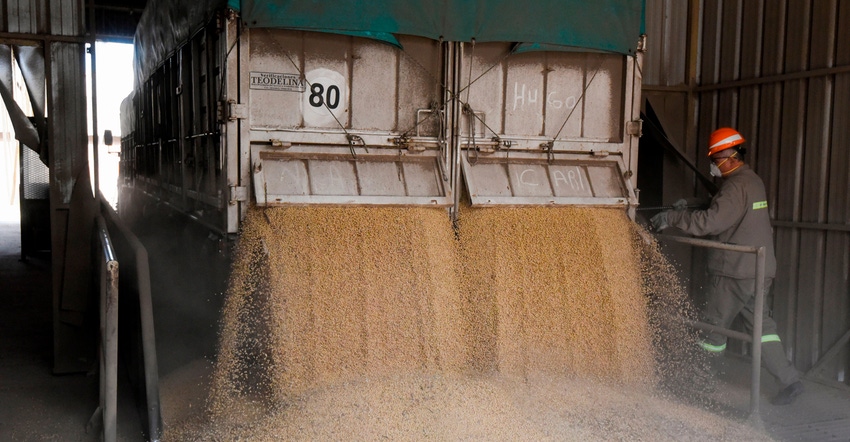
Hopefully, the topics we have discussed in the past several months have been useful for your marketing and peace of mind during these historic times; I think “historic” is the nicest way to put it.
The expected decline in new crop corn values set forth in January’s blog were accelerated and exacerbated by COVID-19. February’s entry focused on the idea of how the movement in futures spreads can aid your bottom line and assist with making decisions to store grain or deliver at harvest. And in March we took a dive into the impact the hardships in the ethanol industry could have on market sentiment into WASDE’s May report and what to do about it.
Maybe the mentioned strategy our team was using to help manage that risk made the last few weeks more tolerable for you. But there is one question still on everyone’s mind:
When does the market bottom?
Every Friday afternoon the CFTC releases a Commitments of Traders Report (COT). The report shows how many contracts, both long and short, market participants in different categories are holding.
The “commercial” position comprises the largest percentage of open interest; that means the commercial category of participant is holding the largest amount of positions in the market.
When corn is near a major high in the market -- think marketing-year-type-high -- the commercial short position can be in excess of 500,000 contracts. The same is true for when corn is near a major low. However, the commercial position will be near flat, and on some occasions, long.
Recent COT data shows that commercials reduced their net short position by roughly 180 million bushels since the end of the 1st Quarter and the net position is entering territory where previous lows have been made.
Good news hard to come by
As we move forward with planting and see the first official USDA new crop balance sheet next month, I suspect rallies will be sold and good news in the next two weeks will be hard to come by. However, there are things lurking beneath the surface, such as recent export strength and what we internally at AgMarket.Net expect, which is very strong feed usage as DDG values have surged.
Also, be mindful of seasonal tendencies. A well-respected seasonal trade strategy provider has the exit to their recommended corn short initiated on April 4, coming next week on April 24. As pointed out by a friend in the industry, May has been the third strongest month of the year over the last 30 years. One cannot ignore the fact that only five of the last 156 months have seen front month corn futures finish the month below $3.30.
Cheap calls
When I look at December ’20 Corn options there is only one word to describe the price of calls: cheap.
Of course, there is some opinion in that statement, but this week’s Dec ’20 contract low of 340’6 is the lowest pre-July low for a December contract since 2006. The proximity to the current futures price for a call option at a 10 or 15 cent cost that has 217 days until expiration looks very attractive to me.
If you have a necessity to sell old crop after the recent price drop, I think it would be prudent to skip the July options and replace the sale with a December call strategy. If buying courage calls is your thing, the next 28 days before Memorial Day weekend might be the window to execute that plan.
There are many sayings in the trading and marketing industries. I will leave you with this one: Tops are made when everyone wants it; bottoms are made when no one wants it.
Contact Brian directly at 815-665-0463 or anyone at AgMarket.Net at 844-4AGMRKT.
The risk of loss in trading futures and/or options is substantial and each investor and/or trader must consider whether this is a suitable investment. AgMarket.Net is the Farm Division of John Stewart and Associates (JSA) based out of St Joe, MO and all futures and options trades are cleared through ADMIS in Chicago IL. This material has been prepared by an agent of JSA or a third party and is, or is in the nature of, a solicitation. By accepting this communication, you agree that you are an experienced user of the futures markets, capable of making independent trading decisions, and agree that you are not, and will not, rely solely on this communication in making trading decisions. Past performance, whether actual or indicated by simulated historical tests of strategies, is not indicative of future results. Trading infromation and advice is based on information taken from 3rd party sources that are believed to be reliable. We do not guarantee that such information is accurate or complete and it should not be relied upon as such. Trading advice reflects our good faith judgment at a specific time and is subject to change without notice. There is no guarantee that the advice we give will result in profitable trades. The services provided by JSA may not be available in all jurisdictions. It is possible that the country in which you are a resident prohibits us from opening and maintaining an account for you.
The opinions of the author are not necessarily those of Farm Futures or Farm Progress.
About the Author(s)
You May Also Like




